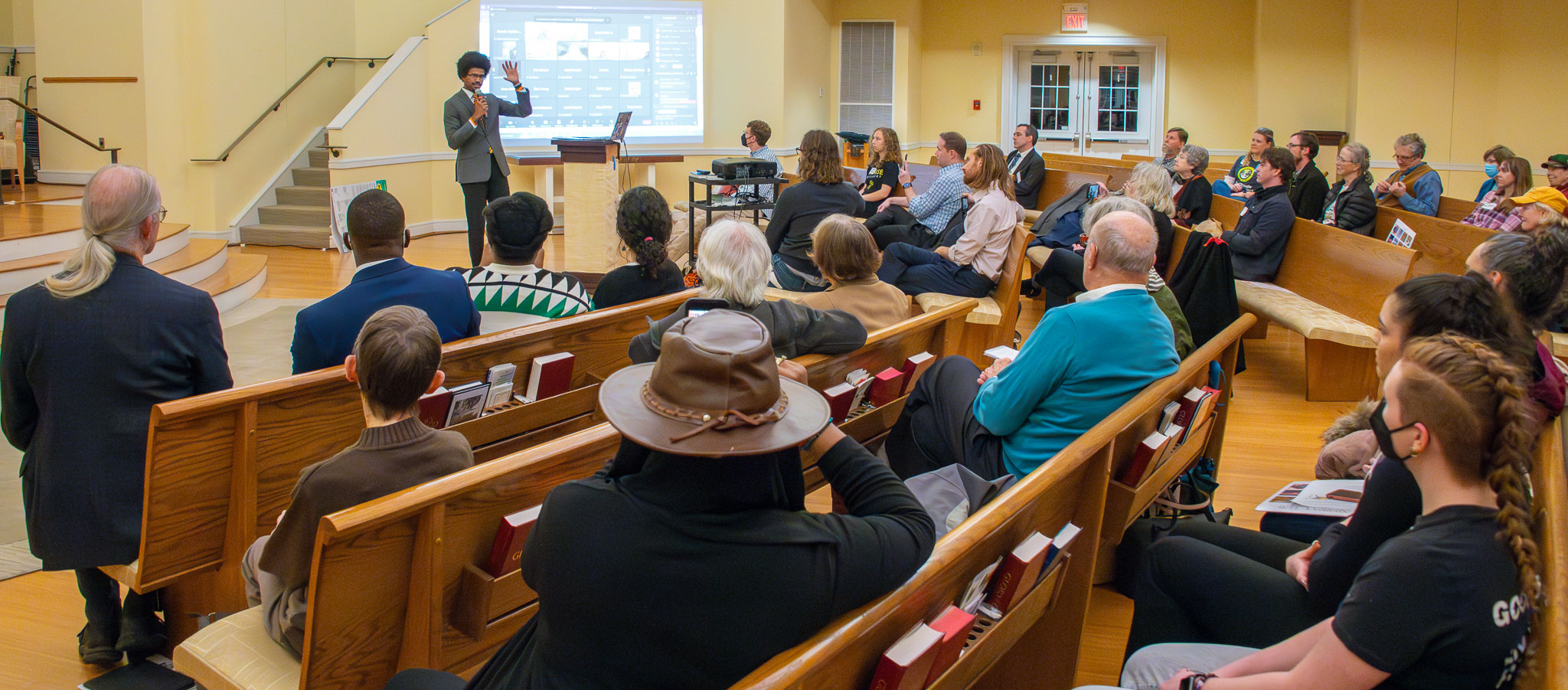
Sustainable Development Goals (497)
The Sustainable Development Goals are a universal call to action to end poverty, protect the planet and improve the lives and prospects of everyone, everywhere. The seventeen Sustaiable Development Goals (SDG) were adopted by all UN Member States in 2015, as part of the 2030 Agenda for Sustainable Development which set out a 15-year plan to achieve the Goals.
Children categories

2 Zero Hunger (13)
End hunger, achieve food security and improved nutrition and promote sustainable agriculture

3 Good Health and Well-Being (65)
Ensure healthy lives and promote well-being for all at all ages

4 Quality Education (45)
Ensure inclusive and equitable quality education and promote lifelong learning opportunities for all

6 Clean Water and Sanitation (34)
Ensure availability and sustainable management of water and sanitation for all

7 Affordable and Clean Energy (35)
Ensure access to affordable, reliable, sustainable and modern energy for all

8 Decent Work and Economic Growth (10)
Promote sustained, inclusive and sustainable economic growth, full and productive employment and decent work for all

9 Industry, Innovation and Infrastructure (30)
Build resilient infrastructure, promote inclusive and sustainable industrialization and foster innovation

11 Sustainable Cities and Communities (162)
Make cities and human settlements inclusive, safe, resilient and sustainable

12 Responsible Consumption and Production (58)
Ensure sustainable consumption and production patterns

14 Life Below Water (83)
Conserve and sustainably use the oceans, seas and marine resources for sustainable development

15 Life on Land (152)
Protect, restore and promote sustainable use of terrestrial ecosystems, sustainably manage forests, combat desertification, and halt and reverse land degradation and halt biodiversity loss

16 Peace, Justice and Strong Institutions (31)
Promote peaceful and inclusive societies for sustainable development, provide access to justice for all and build effective, accountable and inclusive institutions at all levels

17 Partnerships for the Goals (20)
Strengthen the means of implementation and revitalize the global partnership for sustainable development
Prepare for a rare period of cicada pandemonium
Written by Stephen Lyn Bales Toward the end of their lives, periodical cicadas emerge from the ground, molt into their adult wardrobe to find each other and reproduce before they die. Periodical cicada nymphs spend their entire 13-year or 17-year lives underground seeking nourishment in roots and slowing growing before time to emerge. Stephen Lyn Bales/Hellbender Press
Toward the end of their lives, periodical cicadas emerge from the ground, molt into their adult wardrobe to find each other and reproduce before they die. Periodical cicada nymphs spend their entire 13-year or 17-year lives underground seeking nourishment in roots and slowing growing before time to emerge. Stephen Lyn Bales/Hellbender Press
Billions upon billions of cicadas will emerge this spring and summer during a rare convergence of broods
Three years ago, Southern Appalachia experienced the emergence of 17-year cicadas’ Brood X. And already, we’re up for another wave of cicadas!
KNOXVILLE — Periodical cicadas are rare. Of the roughly 3,400 cicada species on the planet, only seven of those live underground as nymphs for a staggeringly odd long time.
It gets odder. The seven species are only found in eastern North America, living in 15 separate populations known as “broods.” Some of those broods remain in their subterranean tunnels for 13 years, and some for 17 years.
When their life cycle is up, the strange little insects emerge by the millions to molt into adults and with their new golden wings fly up into the trees where the females and males find each other. They mate, she lays eggs, and then they drop dead.
When the early American colonists moved to their new homeland in the 1600s they were horrified by these oddly spaced natural phenomena. Pilgrims at Plymouth reported them in 1634. With only a sprinkling of education to serve them, they naturally turned to their only field of reference and the stories from the Bible. The New World newbies deemed them to be swarms of locusts from the list of Biblical Plagues beset on Egypt along with water turning to blood, lice, boils, flies, hailstones and the killing of first borns. And why not? To them a bug was a bug, with some more frightening than others.
- cicada in east tennessee
- cicada life stage
- cicada lifecycle
- cicada brood convergence
- cicadas 2024
- what are cicadas?
- thomas jefferson on cicadas
- biblical plagues
- can humans eat cicadas
- cicada recipe
- stephen lyn bales
- scientific american
- orthoptera
- hemiptera
- cicada brood xix and xiii
- university of connecticut biologist john cooley
Apathy threatens the planet. How do we get people to care?
Written by David Shiffman Hellbender Press editor and publisher Thomas Fraser takes a break during a kayak run on the Pigeon River. A new study bolsters the idea that one way to turn people on to the importance of nature is to get them outside. Jeremy Fraser/Hellbender Press
Hellbender Press editor and publisher Thomas Fraser takes a break during a kayak run on the Pigeon River. A new study bolsters the idea that one way to turn people on to the importance of nature is to get them outside. Jeremy Fraser/Hellbender Press
New research backs up conventional wisdom that getting people outdoors inspires them to conserve nature.
This story was originally published by The Revelator.
The natural world faces many threats, but to many environmentalists, none are so baffling and heartbreaking as public apathy toward those threats.
How do we get more people to care about the natural world so they’re moved to stand up and defend it? The answer is complex, of course, because humans are complex. But part of it can be found in a simple truth: Some people don’t care much about the natural world because they haven’t experienced nature directly.
For years experts have pointed to a potential solution: Getting people to spend more time in nature, they say, can help make them care more about threats to our environment and adopt more pro-environment behaviors.
Momentum builds slowly for TVA’s post-coal plans
Written by Ben Pounds Supercomputer simulation of plasma turbulence in a spherical tokamak, which is an experimental machine designed to harness the energy of fusion. Image courtesy of Walter Guttenfelder, Princeton Plasma Physics Laboratory and Filippo Scotti, Lawrence Livermore National Laboratory via DOE.
Supercomputer simulation of plasma turbulence in a spherical tokamak, which is an experimental machine designed to harness the energy of fusion. Image courtesy of Walter Guttenfelder, Princeton Plasma Physics Laboratory and Filippo Scotti, Lawrence Livermore National Laboratory via DOE.
Fusion research, natural gas, solar power and battery improvements at heart of TVA’s plans to wean itself off coal
OAK RIDGE — The Tennessee Valley Authority is phasing out coal and announcing developments tied to other energy sources at two plants that sit on either side of Oak Ridge.
One of the options includes a fusion test site. Scientists have long pursued fusion energy, though the technology remains in infancy and has yet to generate electricity anywhere.
The TVA coal plant on Edgemoor Road in the Claxton community in Anderson County closed Dec. 1 last year. TVA remains uncommitted to any plans for most of the land around the plant. A company recently announced, however, that it plans tests connected to fusion power in a small part of one of Bull Run’s old buildings by 2028. It will be an experiment and not generate power directly.
Meanwhile, TVA plans to retire Kingston Fossil Plant on Swan Pond Road in Harriman by the end of 2027. Its nine coal-fired units power about 818,000 homes. To replace the power generated at the plant, TVA plans to build a new complex at the Kingston plant’s site, combining natural gas, solar power and battery storage.
TVA plans to retire all its coal plants by the 2030s.
Researchers use environmental justice questions to reveal geographic biases in ChatGPT
Written by David Fleming A U.S. map shows counties where residents could (blue) or could not (pink) receive local-specific information about environmental justice issues. Photo courtesy of Junghwan Kim via Virginia Tech.
A U.S. map shows counties where residents could (blue) or could not (pink) receive local-specific information about environmental justice issues. Photo courtesy of Junghwan Kim via Virginia Tech.
Key findings indicate limitations of AI, suggest improvements
David Fleming is a communications specialist at Virginia Tech.
BLACKSBURG — Virginia Tech researchers have discovered limitations in ChatGPT’s capacity to provide location-specific information about environmental justice issues. Their findings, published in the journal Telematics and Informatics, suggest the potential for geographic biases existing in current generative artificial intelligence (AI) models.
ChatGPT is a large-language model developed by OpenAI Inc., an artificial intelligence research organization. ChatGPT is designed to understand questions and generate text responses based on requests from users. The technology has a wide range of applications from content creation and information gathering to data analysis and language translation.
A county-by-county overview
“As a geographer and geospatial data scientist, generative AI is a tool with powerful potential,” said Assistant Professor Junghwan Kim of the College of Natural Resources and Environment. “At the same time, we need to investigate the limitations of the technology to ensure that future developers recognize the possibilities of biases. That was the driving motivation of this research.”
Utilizing a list of the 3,108 counties in the contiguous United States, the research group asked the ChatGPT interface to answer a prompt asking about the environmental justice issues in each county. The researchers selected environmental justice as a topic to expand the range of questions typically used to test the performance of generative AI tools. Asking questions by county allowed the researchers to measure ChatGPT responses against sociodemographic considerations such as population density and median household income.
Observe, upload and preserve during the City Nature Challenge
Written by Thomas Fraser
KNOXVILLE — People across 13 counties in East Tennessee are urged to record animals, plants and fungi they observe for four days in late April.
City Nature Challenge 2024 is international, but the Knoxville-area challenge includes anyone in Anderson, Blount, Campbell, Claiborne, Grainger, Jefferson, Knox, Loudon, Morgan, Roane, Scott, Sevier and Union counties. It will run April 26 through April 29 via the iNaturalist app, which is available on Google play or the App Store. While the focus is largely centered on urban areas, participants don’t have to live within a city or town to record their observations.
Participants can upload photos from a digital camera to the iNaturalist website even if they lack a smartphone. Zoo Knoxville, Tennessee Butterfly Monitoring Challenge, the city of Knoxville, Ijams Nature Center, Sierra Club, South Doyle Middle School and Discover Life in America are partnering to support the project. No experience is needed to participate. Results will be announced on May 6.
Knoxville’s new alternative transportation leader will start with traffic calming
 Cody Gentry
Cody Gentry
KNOXVILLE — Transportation Engineering Specialist Cody Gentry is the city’s first Vision Zero coordinator.
As the city’s first Vision Zero coordinator, Gentry will oversee efforts by multiple city departments and community groups, including Bike Walk Knoxville, to improve roadway safety and meet the Vision Zero goal, which City Council unanimously endorsed in 2021.
Gentry has worked in the city’s engineering department for 17 years, most recently as a key member of the Neighborhood Transportation Safety Program. The neighborhood-driven program seeks solutions to vehicle speed and traffic safety concerns on residential streets.
“I’m eager for Cody to lend his significant experience to our Vision Zero efforts and find multi-modal solutions to road safety across Knoxville,” said Mayor Indya Kincannon. “We must work together across multiple city departments and community groups in order to reach our goal of ending deadly crashes by 2040. Cody is the person to bring those components together.”
 Methane emissions, such as those that emanate from this oil well on federal property, are being capped across federal land in the Southeast thanks to a Biden Administration grant. NPS
Methane emissions, such as those that emanate from this oil well on federal property, are being capped across federal land in the Southeast thanks to a Biden Administration grant. NPS
Even federally protected areas can be full of old oil and gas wells, and they may need plugging to avoid releasing gas into the air.
ONEIDA — Eric Bruseth of the National Park Service Geologic Resources Division gave a talk on this issue in Historic Rugby at the 2024 Science Meeting, March 13.
Two Tennessee National Park Service areas — Big South Fork National River and Recreation Area near Oneida, straddling the Kentucky state line, and Obed Wild and Scenic River near Wartburg — have over 300 oil and gas wells total throughout the parks. The wells are left over from a time before they were public land. The earliest go back to the 19th century. The danger, Bruseth said, comes from the methane these wells can continue to release.
“Methane as a greenhouse gas can be up to 80 times more potent than carbon dioxide as far as trapping heat in the atmosphere. So smaller sources can have a bigger impact,” Bruseth said.
Ijams and other volunteers pull, push to restore riverine beauty
Written by Ijams Nature Center Odd robotic forms were among the every-worldly items pulled by volunteers from the Tennessee River and its tributaries earlier this month. Courtesy Ijam’s Nature Center.
Odd robotic forms were among the every-worldly items pulled by volunteers from the Tennessee River and its tributaries earlier this month. Courtesy Ijam’s Nature Center.
Betty Boop recovered from drink during widespread river cleanup
KNOXVILLE – Rain didn’t stop 441 volunteers from cleaning up the community’s waterways during the 35th annual Ijams River Rescue on March 9.
They tackled trash at 31 sites in Knox and Blount counties, filling 1,097 bags with garbage weighing an estimated 21,958 pounds (10.48 tons). That doesn’t include the weight of 46 tires and large items such as household appliances, furniture and car parts.
Plastic and Styrofoam waste was common in all areas, but Ijams River Rescue volunteers found items such as a robot puppy, drug paraphernalia, an antique lounge chair, a full patio set, suitcase, Betty Boop doll and shoes, sofas, stove parts, traffic barrels, a car seat, sports gear, a “nice watch” and a $10 bill.
Coal industry mea culpa was destined for a University of Tennessee dumpster. Now there’s a public records lawsuit.
Written by JJ Stambaugh
Coal industry acknowledged its contribution to climate change in 1966
KNOXVILLE — It began innocently enough.
A little over four years ago, an old trade journal was rescued en route to a dumpster by a professor from the University of Tennessee’s Department of Civil and Environmental Engineering.
Professor Chris Cherry had no reason to suspect the journal contained a powerhouse revelation — the coal industry had been aware since 1966 that burning fossil fuels would eventually trigger cataclysmic global warming and had subsequently engaged in a decades-long coverup to protect corporate profits.
Cherry’s surprise discovery soon became international news thanks to a story written by a fellow UT employee, Élan Young, that was picked up by Huffpost. (Young is a regular contributor to Hellbender Press).
- mining congress journal
- elan young
- tom deweese
- climategate
- huffington post
- tennessee public records act
- american policy center
- university of tennessee’s department of civil and environmental engineering
- professor chris cherry utk
- climate change
- coal industry
- coal ash cleanup
- coal mining
- coal smoke
- climate change appalachia
- james r garvey
- hellbender press
- hellbender press climate change
- coal
- coal industry trade publication
- jj stambaugh
- knoxville environmental journalism
- coal knew too
More...
Knoxville hires new sustainability director to help clean up the city
Written by Paige M. Travis
New director comes from Nashville; decarbonization of city a central duty
Paige Travis is a public information specialist for the city of Knoxville.
KNOXVILLE — Mayor Indya Kincannon appointed Metro Nashville Decarbonization Manager Vasu Primlani as Knoxville’s next director of sustainability.
Primlani has more than three decades of experience in sustainability and has received awards for environmental innovation, including the EPA’s Environmental Achievement Award.
“Vasu has an incredible track record in this field,” Kincannon said. “Her experience and creative thinking will help Knoxville meet our goal of an 80 percent reduction in greenhouse gases by 2050.
“I am also impressed with her focus on equity. We must adapt to climate change in a way that is just, equitable, and helps everyday people and small business owners save money too.”
Long a darling of sustainability, Warren Wilson College considers property sales to address budget shortfalls
Written by Jason Sandford A birds-eye view of Warren Wilson College in the Swannanoa River Valley near Asheville. Warren Wilson College
A birds-eye view of Warren Wilson College in the Swannanoa River Valley near Asheville. Warren Wilson College
Warren Wilson College considers selling or leasing parts of its Swannanoa Valley campus as it addresses budget deficit; conservation easements also in play
This story was orginally published by Jason Sandford at Ashevegas.
Eds. note: The headline has been adjusted to reflect that Warren Wilson College is considering the sales, but has not yet put property on the market.
SWANNANOA — Warren Wilson College officials are considering selling or leasing chunks of the bucolic 1,100-acre campus as the college continues to seek ways to offset a $5.5 million budget deficit.
School officials are simultaneously considering adopting conservation easements that would protect, in perpetuity, some 600 acres for educational, research and recreational purposes.
Knox County is trying to fix what we broke at Plumb Creek
KNOXVILLE — Knox County government announced the kickoff of the Plumb Creek Park Stream Enhancement Project, a strategic effort aimed at revitalizing the water quality and ecosystem of Plumb Creek, a tributary of Beaver Creek, supported by federal funding through the American Rescue Plan Act.
(Eds. note: Every Republican representing Tennessee in the U.S. Senate and U.S. House voted against the act that provided the money.)
Plumb Creek Park, located at 1517 Hickey Road, features a disc golf course, playground, shelter, walking trails and an 8-acre dog park.
The project, which began this month, is expected to wrap up in December and include a comprehensive set of restoration activities. Work includes removing obstructions such as culverts and debris; controlling invasive species; stabilizing stream banks; and installing stream structures to improve habitat quality, erosion, and sediment control measures.
Some sections of the park will close temporarily during construction. The dog park will remain open.
This project is funded in part by the American Rescue Plan Act (ARPA), a federal initiative to aid state and local governments in mitigating the economic effects of the COVID-19 pandemic.
— Knox County
Experts and citizens plan and commiserate over TVA’s lack of public process
Written by Élan Young Tennessee state Rep. Justin J. Pearson speaks to community members assembled for the evening discussion during the People’s Voice on TVA’s Energy Plan. John Waterman/Appalachian Voices
Tennessee state Rep. Justin J. Pearson speaks to community members assembled for the evening discussion during the People’s Voice on TVA’s Energy Plan. John Waterman/Appalachian Voices
A lack of public process brought together a coalition of environmental organizations
NASHVILLE — In every state except Tennessee, for-profit utilities and their regulators are required to get public input about energy-resource planning.
These Integrated Resource Plans (IRPs) provide an opportunity for a utility to demonstrate that the ratepayer money the utility spends is on the best mix of energy investments that meet this objective.
In Tennessee, however, TVA, which is the nation’s largest public power provider, has no process for engaging the public on its IRPs.
It is this lack of public process that brought a coalition of environmental organizations together to host a mock public hearing in a Nashville church last month presided by Ted Thomas, former chair of Georgia Center for Energy Solutions. Their goal was to call attention to the fact that TVA acts more like a corporation or a self-regulated monopoly than as a public utility. The groups say that lack of public involvement in the process harms Tennesseeans across the board.



